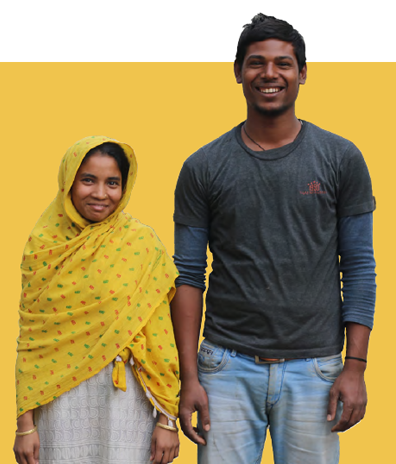Ushering in a New Era of Public-Private Family Planning Partnerships in Uttar Pradesh, India
Balancing the needs of women to access quality and affordable family planning services with supply is not always an easy task because family planning services for poor women are typically limited to overloaded public sector facilities while the nearest, well-equipped, clean private facility is often out of their reach. To address this supply and demand issue, PSI partnered with other stakeholders and development partners to support Government efforts to make family planning services available to all women as a matter of health rights.
This led to the creation of the Hausala Sajheedari Program which was conceptualized together with the National Health Mission, the government of Uttar Pradesh (GoUP), State Innovations in Family Planning Services Project Agency (SIFPSA) and other family planning partners in Uttar Pradesh. Modeled on an e-governance system, Hausala Sajheedari is a web-enabled digital platform for accrediting private health care providers (an essential precondition for engaging in the strategic purchase of family planning services by the state), and empaneling private sector family planning surgeons (which indemnifies them against family planning procedures). The entire online system was designed to minimize the direct human interface by introducing an end-to-end online solution from application to approvals, reimbursement claim submissions to online payments with built-in transparency and accountability.
Hausala Sajheedari effectively replaced the traditional paper-based application process, which was a tedious, non-transparent herculean task that dissuaded most private sector providers from participating. While this model has shown remarkable early success, it still hasn’t realized its complete potential. Of the 876 facilities accredited under Hausala Sajheedari, only about 30% actively participate in the program, while about 70% remain dormant, despite being registered.
“I am willing to provide family planning services but I don’t have the bandwidth to move around in the community to look for clients. The amount reimbursed (INR 2000/- reimbursed as facility/procedure cost for every sterilization client served) hardly covers my basic costs so I cannot pump in my money to do community mobilization and advertisement,” said one provider in explaining why he does not participate.
The facilities that did participate were benefitting from the demand generation activities of several development partners supported by external donors. This – like any other non-government-led project – was not a sustainable model in the long run. Thus, the demand generation gap in the private sector emerged as one of the biggest gaps in creating a long-term sustainable solution for meeting the family planning needs of women.
In seeking a solution, the project looked at the nature of private providers and realized most were stand-alone private clinics and family planning was not their core business. The private-sector facilities primarily served walk-in clients and hardly engaged in any client mobilization efforts. Evidence shows very few clients walk in on their own for family planning services, particularly those in a lower socio-economic segment. While the demand generation model of the government uses a large network of frontline health workers called Accredited Social Health Activists (ASHAs) who act as first point of contact in facilitating family planning and other health services. The current government policy allows ASHAs to only refer clients to the public sector and not to the private sector.
The solution was to advocate for a change in government guidelines that would allow the ASHAs and other front line health workers to refer clients to private-sector facilities so the client not only has a choice of family planning methods but also where she can avail that service.
PSI and a few other development partners have been on the forefront of advocating for this important policy change with government leadership at the centre as well as state level. Many decision-makers agreed in principle to the benefit of shifting the policy, but were unwilling to act on it. This stemmed from the potential risk of cannibalisation of clients by private sector, as well as a lack of clear evidence for making such a drastic change. When TCIHC launched in May 2017, a senior health official made it clear that they would not make the change unless the benefit of doing so were proven and potential risks were mitigated. However, he indicated that if a state government were to agree to test this model and document the evidence, results and learnings, the Indian government would consider revising the guidelines.
PSI along with SIFPSA requested the Mission Director of the National Urban Health Mission in UP to allow a proof of concept around this issue. With consistent engagement, the UP government leadership agreed to test it by layering it on the already successful Hausala Sajheedari platform for family planning services. The Mission Director agreed to pilot this demand aggregation model in five districts with high total fertility rates (TFR), which were also the chosen districts for the government’s existing Mission Parivar Vikas, a family planning program focused on urban populations.
With additional resources made available under Mission Parivar Vikas plus the technology solution to protect against any potential financial malpractice, the right combination was found to demonstrate the proof of concept of this new demand and supply model. The UP NUHM entrusted SIFPSA to lead the implementation of the pilot, while PSI is the designated technical partner to support the intervention including documenting results and learnings. The implementation cost of more than $200,000 (USD) will be leveraged from SIFPSA.
This advocacy win gives hope that the model will lead to a nationwide scale-up of a similar model by allaying mistrusts and fears in private sector engagement. If proven successful, this demand aggregation



